"Short and Sweet" - The BlackOvis Treeline Carbon Sitting Tripod

With multiple backpacking hunts lined up for 2021, my main goal for the upcoming season has been to reduce as much excess weight as possible. There are multiple pieces of gear, such as my sleeping system as well as cooking system, that made the “Reduce Weight” list. However, looking at the list, I noticed that my heaviest, as well as most utilized items, were in my optics/glassing system.
I struggled to find the line between A) reducing weight, B) sacrificing quality, and C) staying within budget. With those three requirements in mind, I picked up a 65mm spotting scope, a small pair of 10x42 binoculars, and was left searching for a tripod. After hearing about the BlackOvis Treeline Sitting Tripod, I was confident that it would fit the bill. After two months of frequent use, the Treeline has become my main tripod, not only on long backpacking hunts, but even on shorter day hunts.
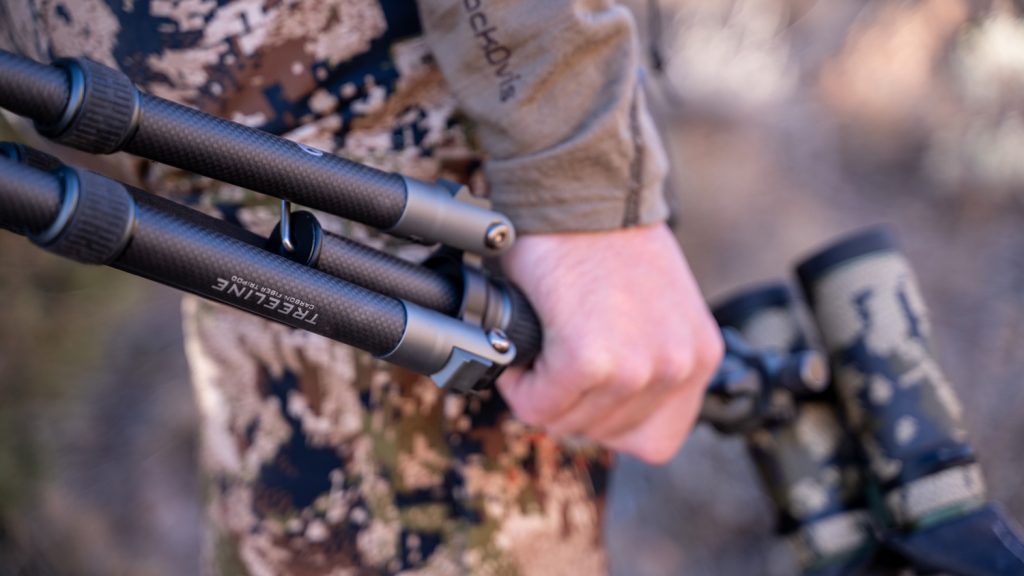
Lightweight and Compact
As mentioned, my biggest goal this year has been to reduce weight. That being said, the weight and overall size of the Treeline were what initially caught my attention. Weighing only 1 pound 14 ounces, the Treeline was a pound and a half lighter than my other “backpacking” tripod! The Carbon Fiber legs and center column help reduce weight, compared to other aluminum tripod legs. I also realized that I didn’t need a tripod with three or four section legs that I can use while standing, especially after analyzing the last three seasons, and realizing that 99% of the glassing that I did was in the sitting position anyway, hence the name, the Treeline Sitting Tripod. Because the Treeline can adjust up to 31 inches tall, I have been very comfortable glassing sitting on the ground, as well as a small, low profile glassing chair.
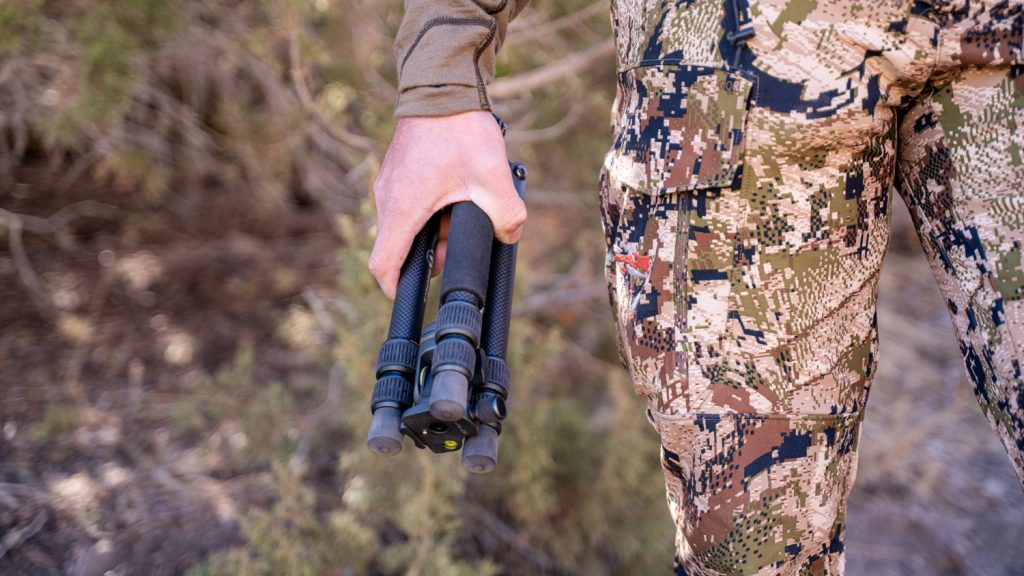
After my first glassing section, I couldn’t help but inspect the tripod in the low-profile collapsed position. At 11 inches tall when collapsed, there was a LOT less bulk and wasted space compared to my old tripod. The extra space allowed me to pack either an extra jacket or a couple bottles of water in the same compartment that, in the past, could only hold the tripod itself.
Stability and Quality
At first, I was skeptical of the stability of the Treeline tripod. Too often, when manufacturers cut weight and size, quality and stability is simultaneously lost as well. However, it is quite the opposite in this case. What I’ve noticed is that because the legs are carbon instead of aluminum, this allows the diameter of the carbon legs to be bigger, yet more lightweight, than other tripods that I have used in the past, which all too often have skinny and unstable legs, which shake and tremble at the lightest wind or the slightest amount of movement. The Treeline performed extremely well under the weight of my 65mm Swarovski ATS. Wanting to see how well it performed under heavier loads, while on a hunt with a good friend of mine, I borrowed his 95mm Swarovski ATX and mounted it up. The results? To say the least, I was extremely impressed with how well the small tripod stabilized the larger spotter. Although weight was reduced and bulk was minimized, stability and quality were not compromised.
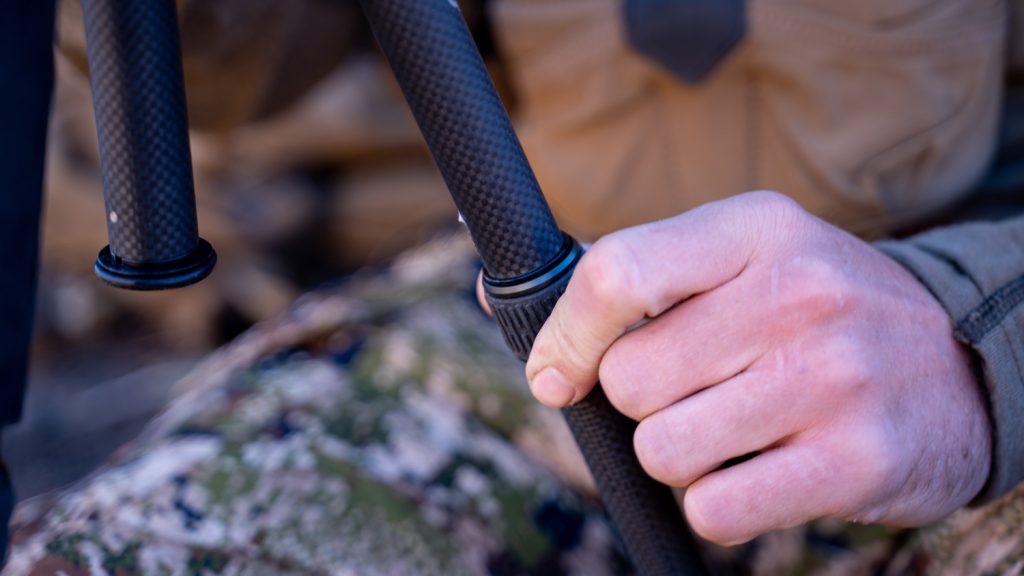
Features and Accessories
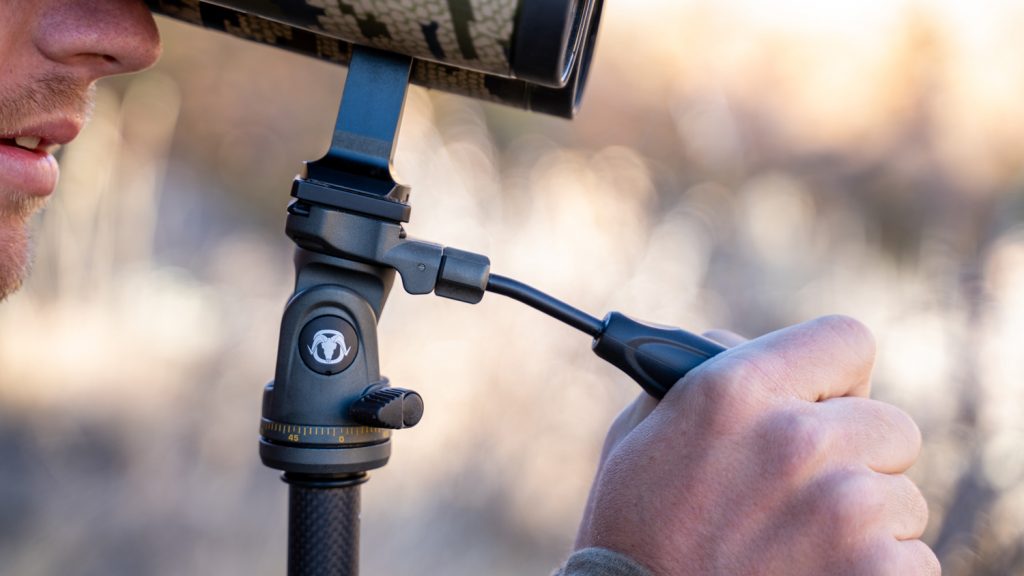
After my initial excitement and awe wore off during the first use of the Treeline, I started to analyze and test the other features and accessories of the tripod, with the aches and pains of my old tripod in the back of my mind. For me, the fluid pan head has been my favorite feature BY FAR. With my other backpacking tripods, every time that I needed to move my spotting scope in any direction, I would have to loosen multiple knobs, move the tripod, and tighten them down. I would also have to overcompensate, especially when moving the tripod up and down, knowing that under the weight of my spotter, the head, base plate, or whole tripod itself would move and slowly float upward once I let go of the handle or the adjustment knobs. Now, with the Treeline, all I have to do is set the tension of the head to where I can move the tripod up and down as well as side to side, and as soon as I let go of the handle, my field of view is exactly where I want, with no movement and compensation needed. Other pains that the Treeline has solved has been ease of setting and adjusting the length of the tripod legs and center column, which is attributed to the twist lock design. A half turn or less is all that it takes, which allows the legs to slide very easily.

The legs can also hinge up and down , providing either a wide or narrow base, depending on the circumstances or terrain. Combine that, along with the rubber feet, and your tripod will be rock solid, especially if you are glassing on a steep slope or have a heavier tripod. If you find yourself in windy conditions, the weight hook at the bottom of the center column definitely comes in handy, allowing one to add weight to the bottom with a backpack, which definitely helps reduce the shakiness caused by said windy conditions.

The accessories that came with the tripod, namely the shutter button and phone holder attachment, have been used a LOT more than initially expected, which have saved a lot of time and stress from the constant struggle of my traditional method when taking field photos, which consisted of either setting a camera up on self timer and running back and forth from the tripod to the animal, or struggling finding the perfect balance point on either a backpack or tree limb, in order to keep the phone in one place long enough in order to take a half-decent picture.
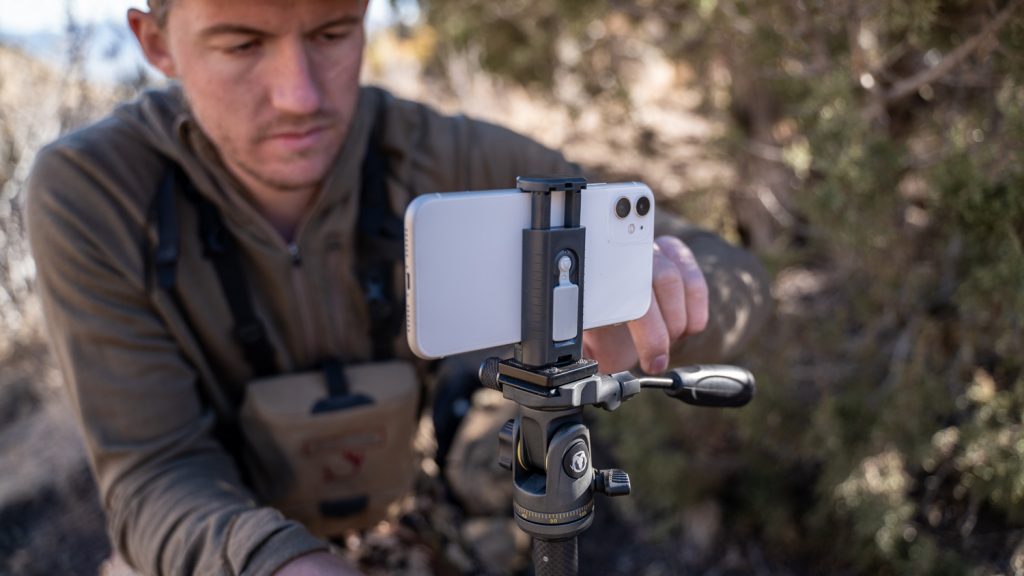
Conclusion
With the experience that I have had the last few months with the Treeline Carbon Fiber Sitting Tripod, unless I know that I am going to be glassing from the truck in a standing position, the Treeline will be my go-to on all of my hunts next year. If you are trying to reduce weight and bulk on your future hunts, I would highly recommend picking up this particular tripod. You won’t be disappointed.

2 Comments